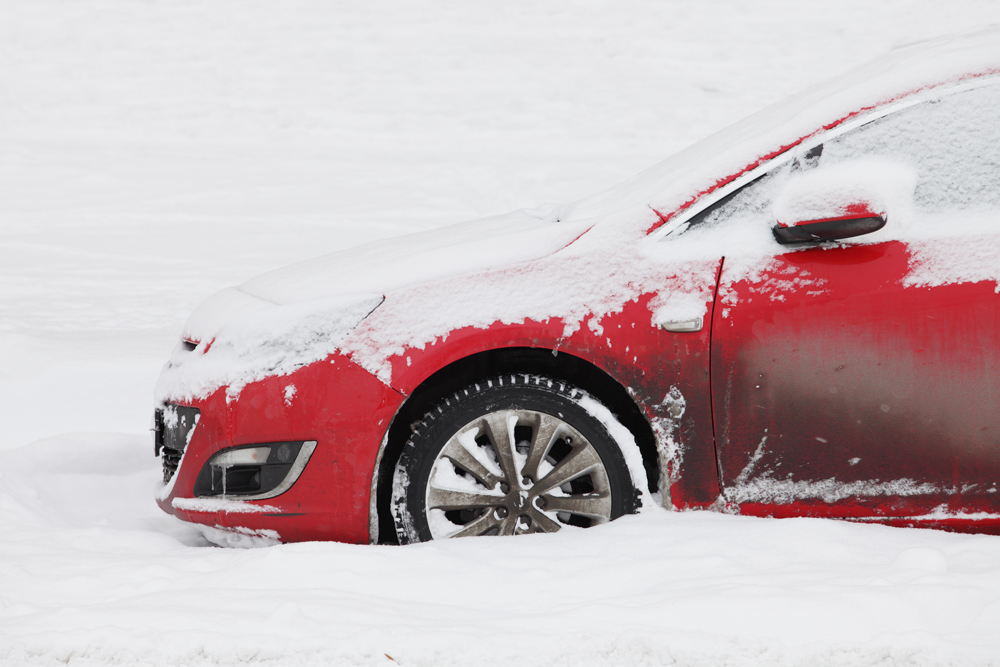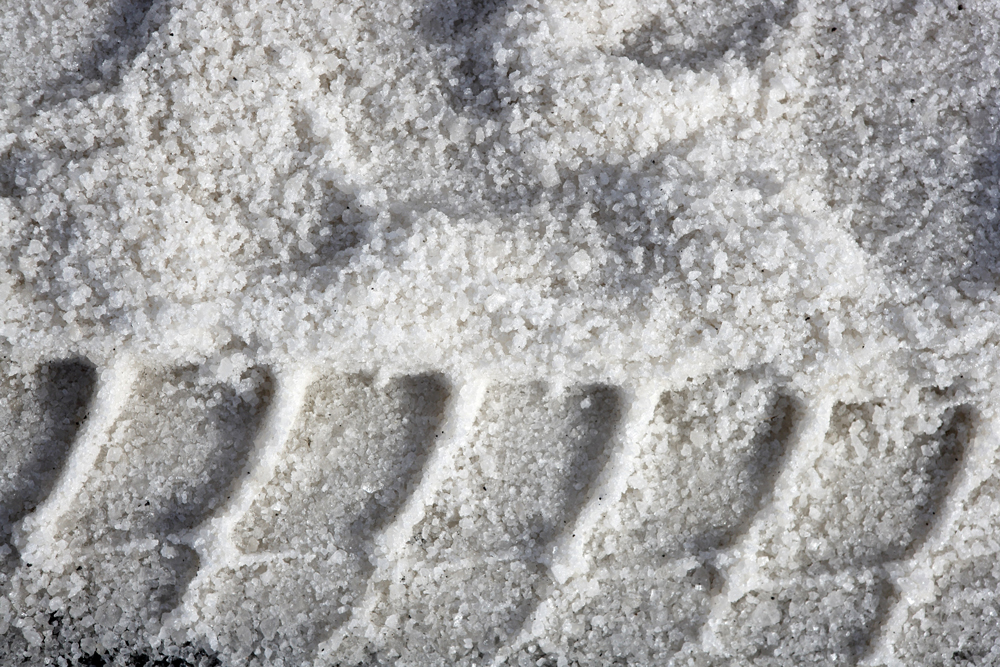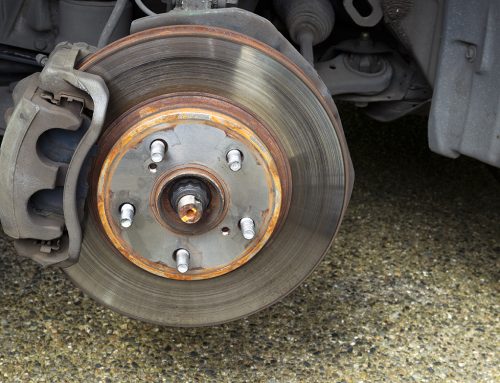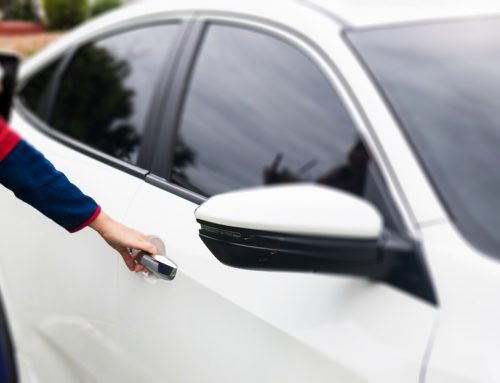The Fight Against Road Salt Vehicle Damage – What Can You Do?
Winter will soon be here and while that presents the opportunity for much merriment in the way of the holiday season, it also serves up a fitting dose of snow and ice in these parts. As Pittsburghers, we’ve all experienced how these elements can make it difficult to drive, especially on the region’s hilly streets.
Thankfully, the local Departments of Public Works will be out in full swing, plowing, sanding and salting the roads to make it as safe as possible for the region’s residents. After all, it’s no secret that snow and icy roads will cause accidents.
Fact: Despite best efforts, we still see more than 116,000 Americans injured and over 1,300 killed on snowy, slushy or icy pavement. Without the use of road salt, these numbers would be far worse. A Marquette University study found that salt saves lives, reducing accidents by up to 88 percent and injuries by up to 85 percent.
That’s why road salt is here to stay. When the weather gets bleak, preventing accidents caused by ice is a public safety imperative and salt’s effectiveness all but ensures its continued use in communities across America.
Fact is, the PA Department of Transportation, and most other Northeast transportation departments, now pre-salt roads in anticipation for snow. Pre-salting means exactly what it sounds like. Dump trucks, filled with the brownest salt available, scatter the aggregate sodium chloride out the back via a sideways spinning hamster wheel.
So, how does road salt work? Salt is used because it lowers the water’s freezing point, melting any ice that has formed, and preventing further ice buildup.
The downside to his very important element of road safety is that road salt doesn’t simply make your vehicle look dirty, it can actually cause rust and corrosion in both seen and unseen parts of your vehicle.
“The biggest threat salt poses to a vehicle is rust, which is accelerated by repeated exposure to salt,” according to a recent article for accuweather.com. “Rust on certain parts of a car can create a slew of problems ranging from hydraulic brake system leaks to subframe damage.”
Thanks to the cumulative effects of chemical reactions and time, the more road salt that comes in contact with your vehicle, the rustier it’s likely to get. For you science buffs, here’s how:
- Water from precipitation puts oxygen and carbon dioxide in contact with the vehicle’s metal parts.
- Free-floating ions in road salt come in contact with the water. These ions speed up the formation of iron oxide.
- Rust starts forming, since rust is simply a layer of iron oxide that appears after extensive exposure to oxygen. The addition of salt and water just makes the rusting process occur faster than normal conditions allow.
There’s no running from science, but how can you keep rust to a minimum when you have no choice but to drive on salted roads?
Why road salt still matters
Thanks to the increased use of rust-inhibiting technology in auto factories, rust has become somewhat less a concern. However, it still should be taken seriously. Holes caused by rust can lead to noxious fumes being pumped into your vehicle and it will make you’re A/C and heating systems virtually useless.
Road salt can also affect a vehicle’s mechanics. For example, the hydraulic brake system carries brake fluid to the brakes in order for them to expand. If salt causes damage to the line resulting in a leak, the brakes won’t work properly, or in some cases, not at all.
The same concern applies to suspension systems, transmissions, mufflers, coil springs and other essential equipment that can be affected by road salt.
Caution: Rust proofing does not work on pre-owned vehicles, only on new ones. When rust proof treatment is applied to a used car, it can trap existing moisture and dirt, causing an increased risk of rust.
There’s nothing you can do about how much snow falls in the “burgh, or how much salt the city lays down on the streets, but there are a few steps that you can take to help protect your vehicle from the onslaught of winter weather.
How best to fight the “salt war”
Let’s face it, you can’t fight Mother Nature, but there are some steps you can take before winter hits and during the winter months to help prevent road salt from damaging your vehicle.
- Wax your vehicle before winter. It’s like body armor for vehicles. A good coat of wax on your vehicle’s exterior is one of the best ways to shield the paint. As you drive around during the winter months, your tires and the tires of other vehicles will kick up water, sleet and slush, which often contain the salt used to melt the snow. But if you’ve recently applied a coating of wax, your paint job has a coating of protection that guards against the salt and grime.
Pay special attention to the areas of your vehicle that are most affected by rust, such as body panels including doors, fenders, the hood and tailgate. The reason for this is that they characteristically have areas that hold moisture.
Moreover, certain vehicles retain moisture just due to the way they are designed, so you have to be especially vigilant with them.
- Keep it clean. Too many people go through the entire winter season without washing their vehicle. Washing your vehicle during the winter months is imperative, since salt, dirt and grime from the roads can build up during any season.
Add go this the fact that a slew of state departments of transportation has begun using salt brine instead of traditional road salt to melt ice and snow. This is even tougher on your vehicle as it scatters across the exterior faster and more aggressively than typical rock salt.
How often? Some people have their vehicles washed weekly, others do so monthly. We prefer the middle ground, somewhere between two and three car washes a month.
Keep in mind, however, that the faster you get the salt off your vehicle, the less damage it can do. Post-snow storm washes aren’t really for cosmetic reasons. They are preventative care for your vehicle.
In washing your vehicle during the wintertime, do so during the day so the vehicle has time to dry. You don’t want the wet stuff to freeze on your finish after temperatures fall.
- Protect your undercarriage.
Remember, even vehicles that have mostly non-metal bodies are susceptible to expensive damage, because the undercarriage contains vital metal parts that also need to be cleaned of the harmful salt residue.
The truly tough duty is getting underneath your vehicle, where most of the salt and slush splashes up into nooks and crannies and gets stuck. Unless you employ a lift in your garage (let’s get real), you’re going to need help with this.
There are car washes that offer steam cleaning and undercarriage care, or you can contact Doubletake Auto for a full treatment.
One more point: It’s important to watch for any warning signs that appear on your dash. Fortunately, most modern vehicles alert you to unseen issues with a warning light. It’s important to get these warnings checked out immediately, especially if it’s a brake warning.
- Avoid the salt.
Driving over the salt can be inevitable, but there are ways to help prevent salt buildup. Avoid driving through deep snow since it can hold hidden salt and really pack it deep into the undercarriage of your vehicle. Salt also collects in large puddles, so if possible, steer around them when you’re out on the road.
If you have to get out on the road in bad weather, try avoiding doing so right before and after a snowstorm as you’re more likely to run into fresh road salt at those times.
Try not to follow the snow plow. That moment when you find yourself driving directly behind a plow is the worst. You’re probably cringing as you hear the salt pinging against your vehicle. If you have the option, change course to avoid being directly behind the plow.
- Go to a mechanic.
It’s always a great idea to have everything checked out by your mechanic, so you know what you’re up against in the winter. Because you can’t identify the parts that are wearing out or beginning to rust, the added stress of winter ice and salt might force your vehicle into more serious issues and eventually auto repair emergencies.
- Keep tires clean.
Before winter begins, make sure your tires are clean and salt-free. Then keep checking and cleaning throughout the winter months. Otherwise, they’ll kick up bad winter ‘stuff” that will pummel your vehicle’s body.
- Don’t forget the carpet.
With all the salt sloshing around on the road and getting splashed onto your vehicle by anyone passing you by, you’re might be thinking, “Well, at least I don’t have to worry about the inside of my vehicle rusting.” True, corrosion won’t really affect anything in there, but salt can still damage your carpet. Even if you kick clumps of snow off your boots, there will still be ample salt on them to seep into and stain the floors.
The optimum solution would be to pick up some all-weather floor mats, you know, the heavy-duty rubber kind. If you’re looking at some stains, here’s a maxim: Use warm water and white vinegar to treat carpets that have stains.
- Park facing east when possible.
This may sound a bit offbeat. But think about it. When the sun rises in the morning in the east, you can take full advantage of this natural defroster by simply parking your vehicle facing in that direction. If you don’t leave too early in the a.m., you’ll reach your vehicle to discover that it’s not as frozen as it would be if you had parked in the opposite direction.
- Garage wherever possible.
Obviously, not everyone in the Pittsburgh area has the luxury of parking in a garage every night. But if you truly intend to protect your vehicle, try to locate a garage when and where you can, even if it means renting one. This will not only guard your vehicle against falling snow and icy winds but allow the salty icy crust to melt off the undercarriage.
- Finish strong.
When winter is finally over, it’s important to give your vehicle a thorough wash and detailing to get rid of the road salt until the next winter. Any deposits left over from winter can continue to cause corrosion year-round if not properly removed.
Though vehicle manufacturers have responded to pleas for cars and trucks featuring more corrosion resistance, those measures ultimately increase production costs and, down the line, consumer prices.
Due to concerns for the ecosystem, environmental authorities also call for an overall reduction in the road salt used.
But until a viable alternative is found, state and local highway crews will continue to drop millions of tons of salt per year onto American roadways.
That’s why you need to persevere and follow the tips above in your fight against it.
One final tip: We would be remiss if we didn’t point out that a thorough detailing of your vehicle prior to the winter season as well as in the spring is a great weapon in the “salt wars.” Contact the professionals at Doubletake Auto for complete information.







